WALS Superstars
NIH’s Wednesday Afternoon Lecture Series Features Nobel Laureates and Other Science Stars
The 2016–2017 NIH Director’s Wednesday Afternoon Lecture Series (WALS) has featured a parade of science superstars on most Wednesdays (and occasionally other days), from 3:00 to 4:00 p.m., in Masur Auditorium (Building 10).
Each season includes some of the biggest names in biomedical and behavioral research. An added treat is the annual J. Edward Rall Cultural Lecture, which features top authors and other cultural icons. This season’s Rall guest was none other than world-renowned cellist Yo-Yo Ma on December 5, 2016 (see the NIH Catalyst article in the January–February 2017 issue).
WALS speakers are nominated by the NIH community. To check out the rest of the season, which ends on June 28, go to https://oir.nih.gov/wals/current-lecture-season. The 2017–2018 season begins in September. Here’s a taste of what 2016–2017 season had to offer.
WALS HIGHLIGHTS
Hollis Cline: Building a Brain That Sees
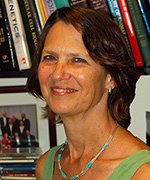
Hollis Cline
New research is revealing how visual activity guides the development of brain circuits that support vision. The findings may help researchers understand the origins of diseases such as amblyopia, explained Hollis Cline, president of the Society for Neuroscience and professor at the Scripps Research Institute (San Diego, California), at the January 18 WALS. Amblyopia is when the vision in one of the eyes is reduced because the brain is favoring the other eye. Cline imaged developing tadpoles, whose brains are clearly visible through their skin, and found that retinal ganglion axons send out exploratory branches before forming synapses with other neurons. During this process, neurons that fire together in response to a common stimulus strengthen their connections and, over time, terminate their branches at the same location.
She also found that neurons firing in response to the same stimulus at slightly different times terminated in slightly offset positions in the brain. In short, neurons that fire in sequence wire in sequence. The wiring rule ensures that information about retinal inputs spread across the entire target area in the brain.
To see a videocast of the Cline’s WALS lecture, “Building Circuits to Process Visual Information,” go to https://videocast.nih.gov/launch.asp?21087.
George Church: The Future of Genetic Codes
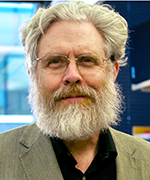
George Church
On February 8, geneticist George Church (Harvard Medical School, Boston) delivered the annual Marshall Nirenberg Lecture, which recognizes 1968 Nobel Laureate Nirenberg for his work deciphering the genetic code. Church himself was a major contributor to one of Science’s Top 10 Breakthroughs of 2013—the CRISPR-Cas method of gene editing. He is also widely recognized for his innovative contributions to genomic science and his many pioneering contributions to chemistry and biomedicine.
In 1984, Church developed the first direct genomic sequencing method, which resulted in the first commercial genome sequence (the human pathogen Helicobactor pylori). He helped initiate the Human Genome Project in 1984 and the Personal Genome Project in 2005. He invented the broadly applied concepts of molecular multiplexing and tags, homologous recombination methods, and array DNA synthesizers.
Much of the latest progress in genomic engineering has happened thanks to the research in Church’s lab. Undoubtedly, one of his more influential contributions has been the development of the CRISPR-Cas9 gene-editing system, which allows for site-specific, programmable DNA cleavage in single cells or whole organisms. Currently, the system is being used for a vast array of biomedical and research applications, from controlling transcription of specific genes to alleviating genetic disorders in animals.
Church has also exploited the advantages of this system to trace the cause and effect of point mutations in patient-derived and genetically engineered induced pluripotent stem cells, to provide insight into the pathophysiology underlying the cardiomyopathy of Barth syndrome (Nat Med 20:616–623, 2014).
Furthering the advancement of medicine with the CRISPR method is one of Church’s goals. He believes, for example, that we can overcome the shortage of organs for transplantation by using CRISPR gene editing to inactivate endogenous retroviruses that can create problems in pig-to-human xenotransplants. Beyond medical applications, Church also discussed the potential (and concerns) of altering wild populations to address ecological problems.
One shortcoming of the CRISPR-Cas9 technology is what Church referred to during his presentation as the double-strand-break dilemma: “When you make a double-strand break, it’s a race between the cell fixing it and getting your donor DNA to fix it how you want,” he explained.
To overcome this efficiency limitation, Church’s lab is working on CRISPR-Cas9 alternatives that would allow gene editing while avoiding double-strand breaks. With this new approach, Church and his team have successfully performed the largest and most radical genome engineering to date, altering the genetic code in Escherichia coli. The end result is an organism that depends on nonstandard amino acids to survive and thus is easily biocontainable, and it possesses a unique synthetic genetic code that prevents horizontal gene transfer and confers resistance to almost any virus. This work provides a foothold for developing safer genetically modified organisms (Nature 518:55–60, 2015; Science 342:361–363, 2013).
The CRISPR-Cas9 gene-editing technique has opened the door for developing therapies that remained somewhat unthinkable until recently. For instance, the possibility of engineering one’s own genome has attracted fans since the advent of CRISPR-Cas9—so much so that do-it-yourself gene-therapy kits are available in the market for reversing aging.
Church cautions that there hasn’t been extensive testing of these approaches but agrees that veterinary preclinical trials, which his group is working on, place human studies in the foreseeable future.
To watch a videocast of George Church’s WALS lecture, “The Future of Genetic Codes and BRAIN Codes,” go to https://videocast.nih.gov/launch.asp?21127.
Linda Buck: Unraveling Smell
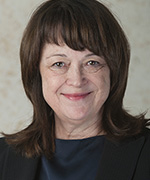
Linda Buck
Not only does WALS have named lectures in honor of Nobel laureates, but also some of the lecturers are Nobel laureates themselves. Linda Buck (Fred Hutchinson Cancer Research Center, Seattle), who won the 2004 Nobel Prize in Physiology or Medicine (with Richard Axel) for her discoveries of odorant receptors and the organization of the olfactory system, presented the annual Margaret Pittman Lecture on March 29.
Pittman was the first woman to be a laboratory chief at NIH (1957–1971) and is recognized for her work on an improved and standardized pertussis (whooping cough) vaccine; the isolation of the influenza strain responsible for most childhood meningitis; the identification of the cause of epidemic conjunctivitis; and her key observations that led to the development of a Salmonella vaccine.
In the WALS lecture, Buck talked about her pioneering work that has shed light on how thousands of odor molecules are detected in the nose and translated by the brain into perceptions and instinctive behaviors. A videocast of her lecture, “Unravelling Smell,” will be available soon at https://videocast.nih.gov/PastEvents.asp (search “past lectures” for March 29, 2017).
Thomas Christian Südhof: Synapse Formation in the Brain (coming in 2018)
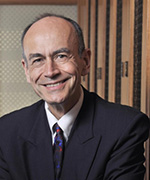
Thomas Christian Südhof
Another Nobel laureate, Thomas Christian Südhof (Stanford School of Medicine, Stanford, California), was originally scheduled to give a WALS lecture this year, but will coming on Wednesday, January 31, 2018, instead.
Südhof is interested in how synapses form and function in the developing and adult brains. His work focuses on the role of synaptic cell-adhesion molecules in establishing synapses and shaping their properties, on pre- and postsynaptic mechanisms of membrane traffic, and on impairments in synapse formation and synaptic function in neuropsychiatric and neurodegenerative disorders. He shared the 2013 Nobel Prize in Physiology or Medicine with James E. Rothman and Randy W. Schekman “for their discoveries of machinery regulating vesicle traffic, a major transport system in our cells.” If you can’t make the talk in person, you can watch a videocast at http://videocast.nih.gov.
Atul Gawande (Tuesday, June 13, 2017; 2:00-3:00 p.m.)
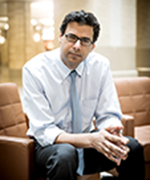
CREDIT: TIM LLEWELLYN
Atul Gawande
Surgeon, writer, and public health researcher Atul Gawande (Harvard Medical School) will give a talk on Tuesday, June 13. He practices general and endocrine surgery at Brigham and Women’s Hospital (Boston). He is a professor in the Department of Health Policy and Management at the Harvard T.H. Chan School of Public Health and the Samuel O. Thier Professor of Surgery at Harvard Medical School (Boston).
Gawande has been a staff writer for The New Yorker magazine since 1998 and has written four New York Times bestsellers: Complications, Better, The Checklist Manifesto, and most recently, Being Mortal: Medicine and What Matters in the End. He is the winner of two National Magazine Awards, Academy Health’s Impact Award for highest research impact on health care, a MacArthur Fellowship, and the Lewis Thomas Award for writing about science. The event will be videocast to NIH only at http://videocast.nih.gov.
This page was last updated on Monday, April 11, 2022
